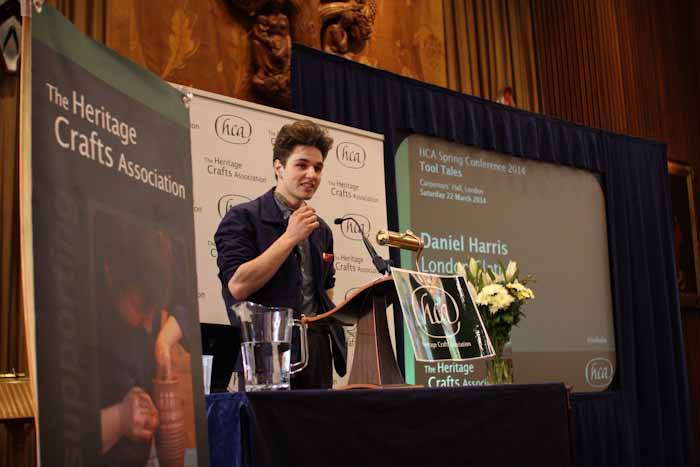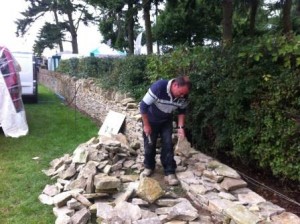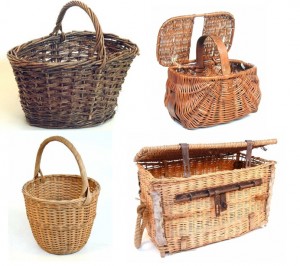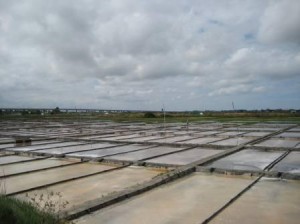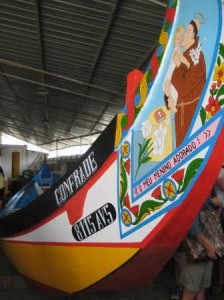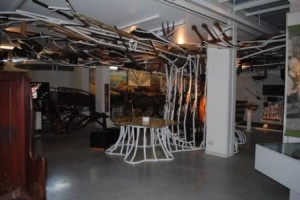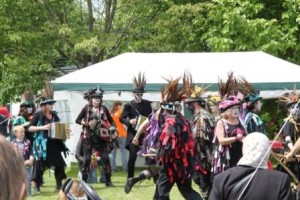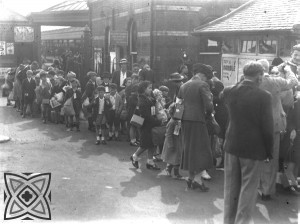On Saturday the Heritage Crafts Association held its fourth annual Spring Conference, and this year’s theme was ‘Tool Tales’. What better theme could there be for a craft conference? Almost every craftsperson needs at least one tool – and some need hundreds!
It was a very packed day, with five speakers, an AGM, awards and an instant gallery of delegates’ favourite tools to fit in. Some of my favourite quotes came from Professor Trevor Marchand, who spoke about problem-solving in bench-side learning – ‘craft is problem-solving’ and ‘hand work is intelligent work’ – and Dr Phil Harding in his appropriately titled talk, ‘Getting a Handle on Prehistory’ – ‘a tool with no handle is a useless tool’. And Grace Horne, knife-maker and corset-maker, who described herself as having an extra-marital affair with scissors, reminded us that scissors are so much more than ‘two knives attached by a screw’.
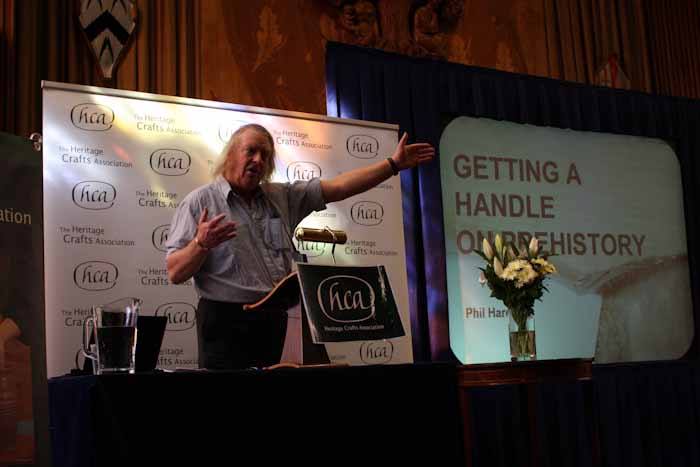
Phil Harding getting a handle on pre-history (which I initially mis-read as ’embroidery’ and was rather confused!)
Daniel Harris of the London Cloth Company made everyone laugh with his stories of spending his days transporting, dismantling and rebuilding large numbers of nineteenth-century industrial looms (there’s always a few pieces leftover – ready to form part of the next loom). And Roger W. Smith wowed us all with his incredible patience and precision – watch-making is a craft that involves 34 separate trades, all of which Roger undertakes at his workshop where they make only eleven watches a year!
In July 2013 the HCA launched its own suite of Heritage Crafts Awards, building on existing awards, and the winners were announced on Saturday. They included local boat-builder Colin Henwood of Henwood & Dean, who won the ‘Maker of the Year’ award. Colin is based in Henley-on-Thames and specialises in the restoration, rebuilding and maintenance of classic wooden Thames boats – and he was recently interviewed by Phillippa, MERL’s Public Programmes Manager, for the oral histories element of the Reading Connections project.
This week I’m setting myself the challenge of getting to grips with social media – and there’s loads out there about Tool Tales. Why not take a look at the HCA Facebook page to see photos from the day, Pinterest to see photos of tools for the instant gallery, and Storify to see some of the tweets about the day.


